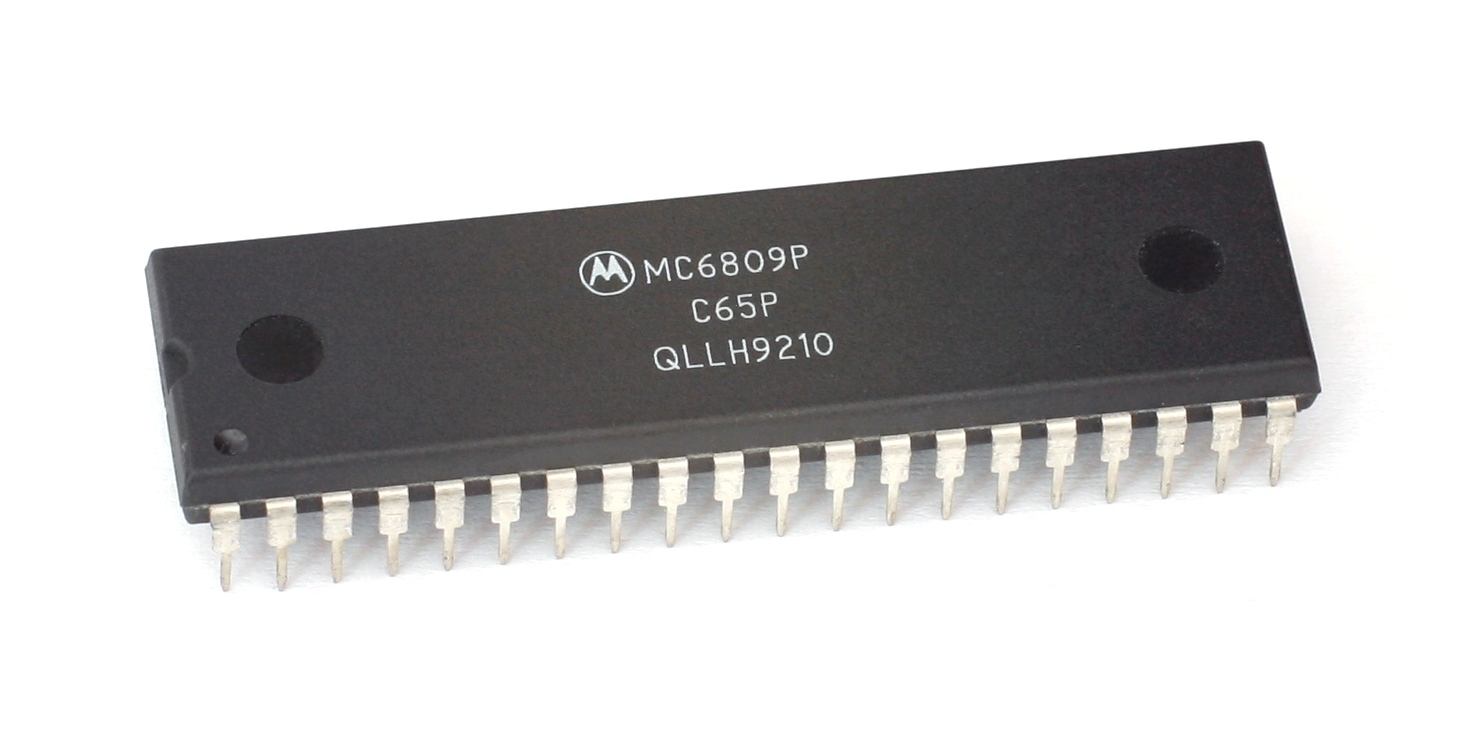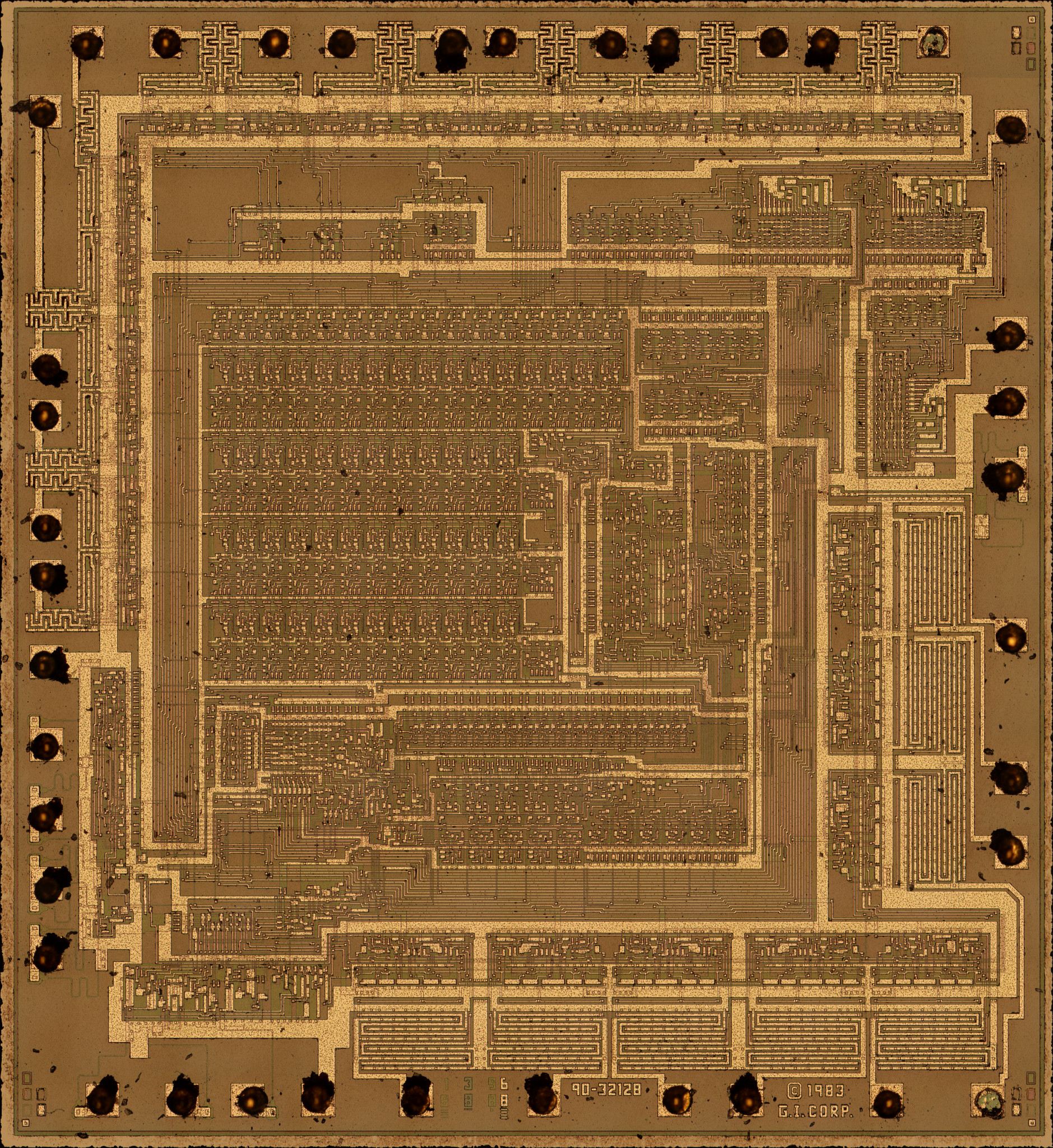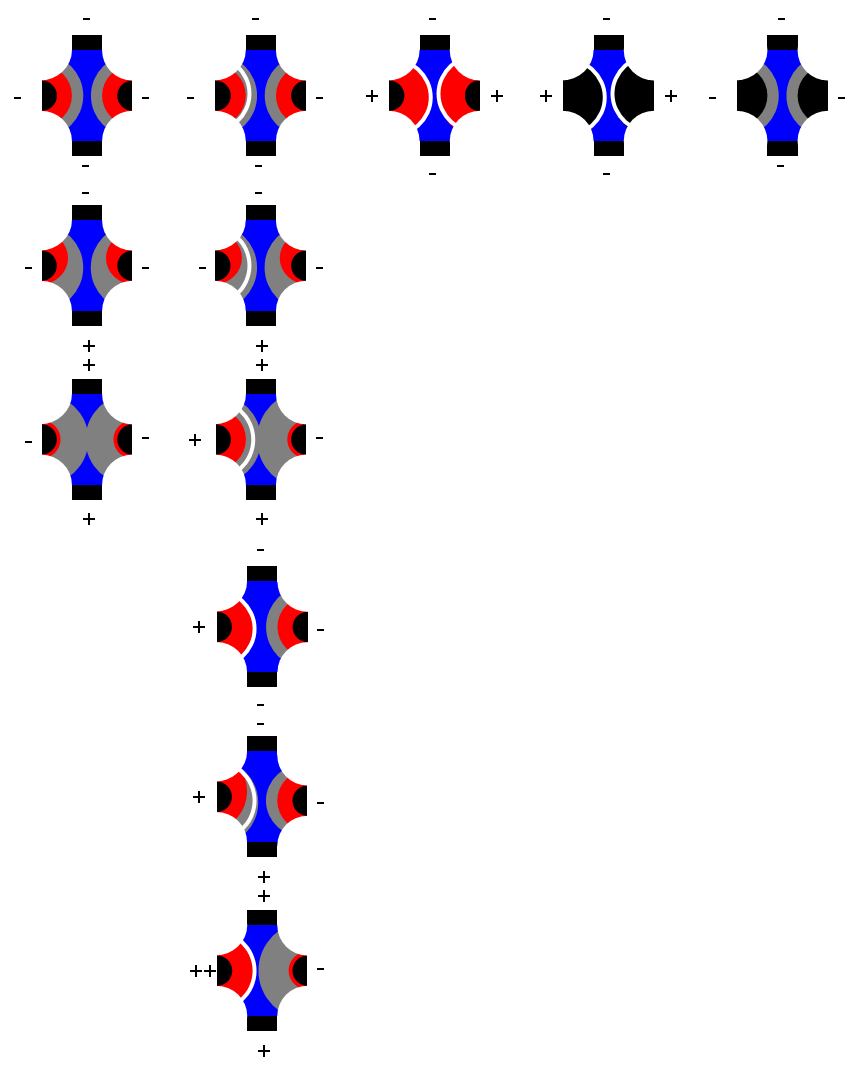|
List Of Sound Chips
Sound chips come in different forms and use a variety of techniques to generate audio signals. This is a list of sound chips that were produced by a certain company or manufacturer, categorized by the sound generation of the chips. Programmable sound generators (PSG) Wavetable synthesis Frequency modulation (FM) synthesis Pulse-code modulation (PCM) sampling See also * List of sound card standards * List of Yamaha sound chips *Sound recording and reproduction Sound recording and reproduction is the electrical, mechanical, electronic, or digital inscription and re-creation of sound waves, such as spoken voice, singing, instrumental music, or sound effects. The two main classes of sound recording te ... References {{reflist External linksSound generators of the 1980s home computers- Has a list of chips, pictures, datasheets, etc. Video game music technology ... [...More Info...] [...Related Items...] OR: [Wikipedia] [Google] [Baidu] |
Sound Chip
A sound chip is an integrated circuit (chip) designed to produce audio signals through digital, analog or mixed-mode electronics. Sound chips are typically fabricated on metal–oxide–semiconductor (MOS) mixed-signal chips that process audio signals (analog and digital signals, for both analog and digital data). They normally contain audio components such as oscillators, envelope controllers, samplers, filters, amplifiers, and envelope generators. History A number of sound synthesis methods for electronically producing sound were devised during the late 20th century. These include programmable sound generators (PSG), wavetable synthesis, and frequency modulation synthesis (FM synthesis). Such sound chips were widely used in arcade game system boards, video game consoles, home computers and digital synthesizers. Since the late-1990s, pulse-code modulation (PCM) sampling has been the standard for many sound chips, as used in the Intel High Definition Audio (IHDA ... [...More Info...] [...Related Items...] OR: [Wikipedia] [Google] [Baidu] |
Atari Inc
Atari, Inc. was an American video game developer and home computer company founded in 1972 by Nolan Bushnell and Ted Dabney. Atari was a key player in the formation of the video arcade and video game industry. Based primarily around the Sunnyvale, California, area in the center of Silicon Valley, the company was initially formed to develop arcade games, launching with ''Pong'' in 1972. As computer technology matured with low-cost integrated circuits, Atari ventured into the consumer market, first with dedicated home versions of ''Pong'' and other arcade successes around 1975, and into programmable consoles using game cartridges with the Atari Video Computer System (Atari VCS or later branded as the Atari 2600) in 1977. To bring the Atari VCS to market, Bushnell sold Atari to Warner Communications in 1976. In 1978, Warner brought in Ray Kassar to help run the company, but over the next few years, gave Kassar more of a leadership role in the company. Bushnell was fired in 19 ... [...More Info...] [...Related Items...] OR: [Wikipedia] [Google] [Baidu] |
Oric 1
Oric was the name used by UK-based Tangerine Computer Systems for a series of 6502-based home computers sold in the 1980s, primarily in Europe. With the success of the ZX Spectrum from Sinclair Research, Tangerine's backers suggested a home computer and Tangerine formed Oric Products International Ltd to develop the Oric-1. The computer was introduced in 1982. During 1983, approximately 160,000 Oric-1 computers were sold in the UK, plus another 50,000 in France (where it was the year's top-selling machine). This resulted in Oric being acquired and given funding for a successor model, the 1984 Oric Atmos. Oric was bought by Eureka, which produced the less successful Oric Telestrat (1986). Oric was dissolved the year the Telestrat was released. Eastern European clones of Oric machines were produced into the 1990s. Models Oric-1 Based on a 1 MHz MOS Technology 6502 CPU, the Oric-1 came in 16 KB or 48 KB RAM variants for £129 and £169 respectively, matc ... [...More Info...] [...Related Items...] OR: [Wikipedia] [Google] [Baidu] |
Colour Genie
The EACA EG2000 Colour Genie was a computer produced by Hong Kong-based manufacturer EACA and introduced in Germany in August 1982. It followed their earlier Video Genie I and II computers and was released around the same time as the business-oriented Video Genie. The BASIC was compatible with the Video Genie I and II and the TRS-80, except for graphic and sound commands; most of the routines for Video Genie I BASIC commands were left over in the Colour Genie's BASIC ROM. Programs were provided to load TRS-80 programs into the Colour Genie. Colour Genie disks could be read in a TRS-80 floppy disk drive and vice versa, editing the pdrive commands. The original Video Genies had been based upon (and broadly compatible with) the then-current TRS-80 Model I. As the Colour Genie was descended from this architecture, it was incompatible with Tandy's newer TRS-80 Color Computer which - despite its name - was an entirely new and unrelated design based on an entirely different CPU, and thus i ... [...More Info...] [...Related Items...] OR: [Wikipedia] [Google] [Baidu] |
Motorola 6809
The Motorola 6809 ("''sixty-eight-oh-nine''") is an 8-bit microprocessor with some 16-bit features. It was designed by Motorola's Terry Ritter and Joel Boney and introduced in 1978. Although source compatible with the earlier Motorola 6800, the 6809 offered significant improvements over it and 8-bit contemporaries like the MOS Technology 6502, including a hardware multiplication instruction, 16-bit arithmetic, system and user stack registers allowing re-entrant code, improved interrupts, position-independent code and an orthogonal instruction set architecture with a comprehensive set of addressing modes. Among the most powerful 8-bit processors of its era, it was also much more expensive. In 1980 a 6809 in single-unit quantities was compared to for a Zilog Z80 and for a 6502. It was launched when a new generation of 16-bit processors were coming to market, like the Intel 8086, and 32-bit designs were on the horizon, including Motorola's own 68000. It was not feature competitiv ... [...More Info...] [...Related Items...] OR: [Wikipedia] [Google] [Baidu] |
Scramble (video Game)
is a side-scrolling shooter game released for arcades in 1981. It was developed by Konami, and manufactured and distributed by Leijac in Japan and Stern in North America. It was the first side-scrolling shooter with forced scrolling and multiple distinct levels,Game Genres: Shmups Professor Jim Whitehead, January 29, 2007, Accessed June 17, 2008 serving as a foundation for later side-scrolling shooters. It was Konami's first major worldwide hit. In the United States, it sold 15,136 arcade cabinets within five months and became Stern's second best-selling game. ''Scramble'' was not ported to any major contemporary consoles or computers, but there were releases for the |
DECO Cassette System
240px, DECO Cassette System loading screen The DECO Cassette System was introduced by Data East in October 1980. It was the first standardised arcade system that allowed arcade owners to change games. Developed in 1979, it was released in Japan in 1980 and then North America in 1981. The arcade owner would buy a base cabinet, while the games were stored on standard audio cassette tapes. The arcade owner would insert the cassette and a key module into the cabinet. When the machine was powered on, the program from the tape would be copied into the cabinet's RAM chips; this process took about two to three minutes. Afterwards, the game could be played freely until the machine was powered off. Game list In bold characters are the video games that were also released in dedicated arcade cabinets. * 01: '' Highway Chase'' (also known as ''Mad Alien'') * 02: '' Sengoku Ninja Tai'' (also known as ''Ninja'') * 03: ''Manhattan'' * 04: '' Terranean'' * 05: '' Missile Sprinter'' * 06: '' Neb ... [...More Info...] [...Related Items...] OR: [Wikipedia] [Google] [Baidu] |
Arcade System Board
An arcade video game takes player input from its controls, processes it through electrical or computerized components, and displays output to an electronic monitor or similar display. Most arcade video games are coin-operated, housed in an arcade cabinet, and located in amusement arcades alongside other kinds of arcade games. Until the late 1990s, arcade video games were the largest and most technologically advanced segment of the video game industry. Early prototypical entries ''Galaxy Game'' and ''Computer Space'' in 1971 established the principle operations for arcade games, and Atari's ''Pong'' in 1972 is recognized as the first successful commercial arcade video game. Improvements in computer technology and gameplay design led to a golden age of arcade video games, the exact dates of which are debated but range from the late 1970s to mid-1980s. This golden age includes ''Space Invaders'', ''Pac-Man'', and ''Donkey Kong''. The arcade industry had a resurgence from the earl ... [...More Info...] [...Related Items...] OR: [Wikipedia] [Google] [Baidu] |
AY-3-8910
The AY-3-8910 is a 3-voice programmable sound generator (PSG) designed by General Instrument in 1978, initially for use with their 16-bit General Instrument CP1600, CP1610 or one of the PIC1650 series of 8-bit microcomputers. The AY-3-8910 and its variants were used in many arcade games—Konami's ''Gyruss'' contains five—and pinball machines as well as being the sound chip in the Intellivision and Vectrex video game consoles, and the Amstrad CPC, Oric-1, Colour Genie, Elektor TV Games Computer, MSX, and later ZX Spectrum home computers. It was also used in the Mockingboard and Cricket sound cards for the Apple II and the Speech/Sound Cartridge for the TRS-80 Color Computer. After General Instrument's spinoff of Microchip Technology in 1987, the chip was sold for a few years under the Microchip brand. It was also manufactured under license by Yamaha Corporation, Yamaha (with a selectable clock divider pin and a double-resolution and double-rate volume envelope table) ... [...More Info...] [...Related Items...] OR: [Wikipedia] [Google] [Baidu] |
General Instrument
General Instrument (GI) was an American electronics manufacturer based in Horsham, Pennsylvania, specializing in semiconductors and cable television equipment. They formed in New York City in 1923 as an electronics manufacturer. During the 1950s, the company began a series of acquisitions under the direction of Moses Shapiro. Among the more notable purchases was General Transistor in 1960, which led to GI becoming a major producer of transistors, and later, integrated circuits (ICs). By the late 1960s, the company was mostly depending on sales into the television industry, which was further bolstered by the 1967 purchase of Jerrold Electronics. The company changed markets continually. Through the 1970s they focussed mostly on the off-track betting market through their purchase of American Totalisator, but this market faced significant competition in the late 1970s. At this time, GI became well known for their IC's including the CP1600 used in the Mattel Intellivision game console, ... [...More Info...] [...Related Items...] OR: [Wikipedia] [Google] [Baidu] |
NMOS Logic
N-type metal-oxide-semiconductor logic uses n-type (-) MOSFETs (metal-oxide-semiconductor field-effect transistors) to implement logic gates and other digital circuits. These nMOS transistors operate by creating an inversion layer in a p-type transistor body. This inversion layer, called the n-channel, can conduct electrons between n-type "source" and "drain" terminals. The n-channel is created by applying voltage to the third terminal, called the gate. Like other MOSFETs, nMOS transistors have four modes of operation: cut-off (or subthreshold), triode, saturation (sometimes called active), and velocity saturation. For many years, NMOS circuits were much faster than comparable PMOS and CMOS circuits, which had to use much slower p-channel transistors. It was also easier to manufacture NMOS than CMOS, as the latter has to implement p-channel transistors in special n-wells on the p-substrate. The major drawback with NMOS (and most other logic families) is that a DC current mus ... [...More Info...] [...Related Items...] OR: [Wikipedia] [Google] [Baidu] |
Depletion Mode
In field-effect transistors (FETs), depletion mode and enhancement mode are two major transistor types, corresponding to whether the transistor is in an on state or an off state at zero gate–source voltage. Enhancement-mode MOSFETs (metal–oxide–semiconductor FETs) are the common switching elements in most integrated circuits. These devices are off at zero gate–source voltage. NMOS can be turned on by pulling the gate voltage higher than the source voltage, PMOS can be turned on by pulling the gate voltage lower than the source voltage. In most circuits, this means pulling an enhancement-mode MOSFET's gate voltage towards its drain voltage turns it on. In a depletion-mode MOSFET, the device is normally on at zero gate–source voltage. Such devices are used as load "resistors" in logic circuits (in depletion-load NMOS logic, for example). For N-type depletion-load devices, the threshold voltage might be about −3 V, so it could be turned off by pulling the gate 3&nb ... [...More Info...] [...Related Items...] OR: [Wikipedia] [Google] [Baidu] |






